Here’s a question I hear all the time: “How do I play faster?”
It may take time to ramp up your speed, but you can do it. Go into this with the right mindset: work at your edge. Don’t worry if you can’t play something as fast as Mark O’Connor. At the same time, if you push the tempo a bit, you can improve your performance of the tune as well as your overall technical ability. Plus, playing at a faster tempo will help you remember things.
7 Ways To Play Faster
- Gradually speed things up using a metronome
- Start by speeding up single notes
- Do less
- Speed up the hard parts first
- Track your progress
- Slow down to play fast
- Accept your limits
Preparation
Be able to play at a steady tempo. Make sure you can play it at a steady tempo with a metronome before you speed it up. If you can’t play something at a steady, medium tempo with a metronome, then it will only frustrate you to speed it up. Learn more about playing at a steady tempo here:
Warm up the hand
Warm up your left hand with some simple exercises:
- D0-1-2-3-2-1
- D0-1-2-3-4-3-2-1
- add slur patterns, practice on all four strings
Gradually speed things up using a metronome
Increase the speed in small increments of 2-3 bpm at a time until you reach your maximum speed for the day.
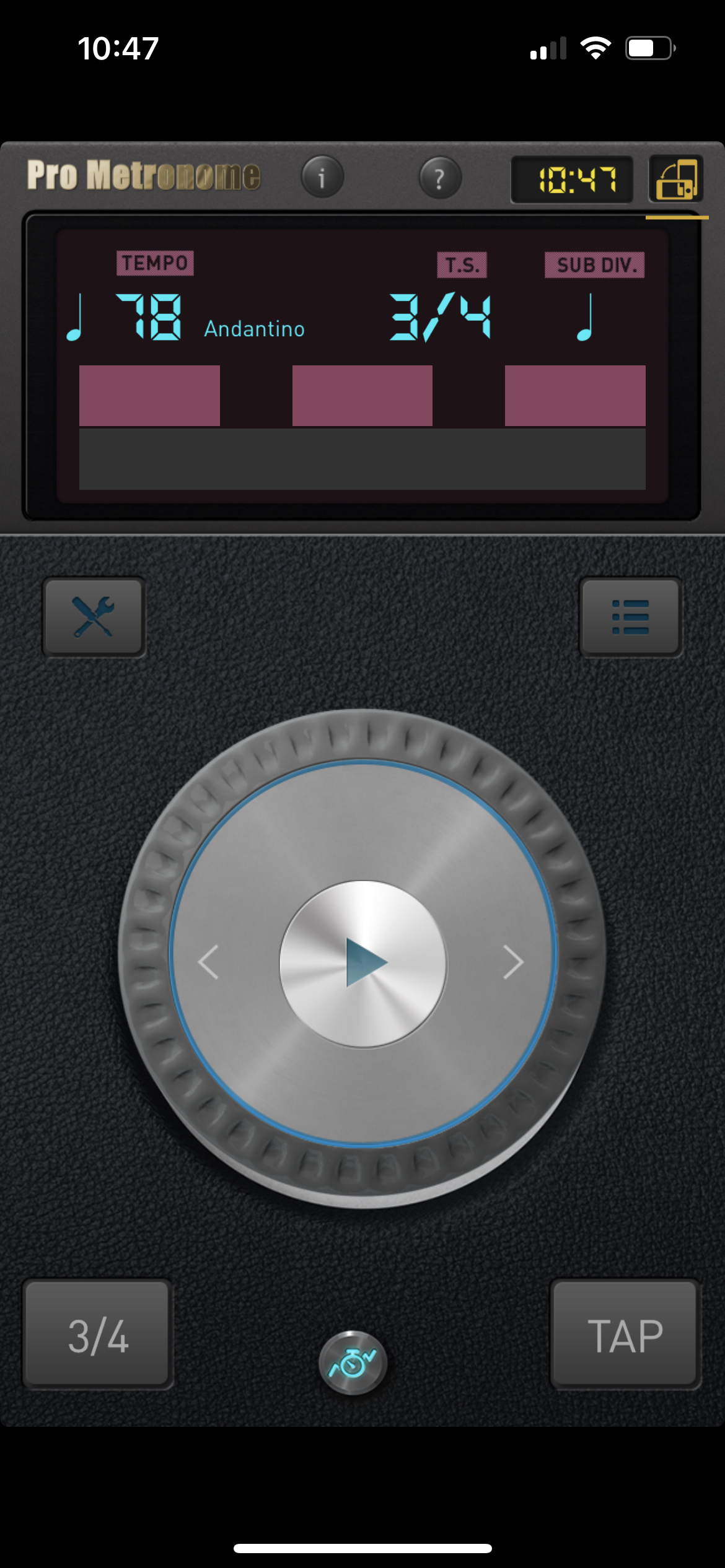
It will be hard to even notice the difference at first.You’ll move towards your edge. When you go past your edge, you won’t be able to play the piece any more without stopping.
Play something as fast as you can without falling apart.
Start with single notes, then add complexity
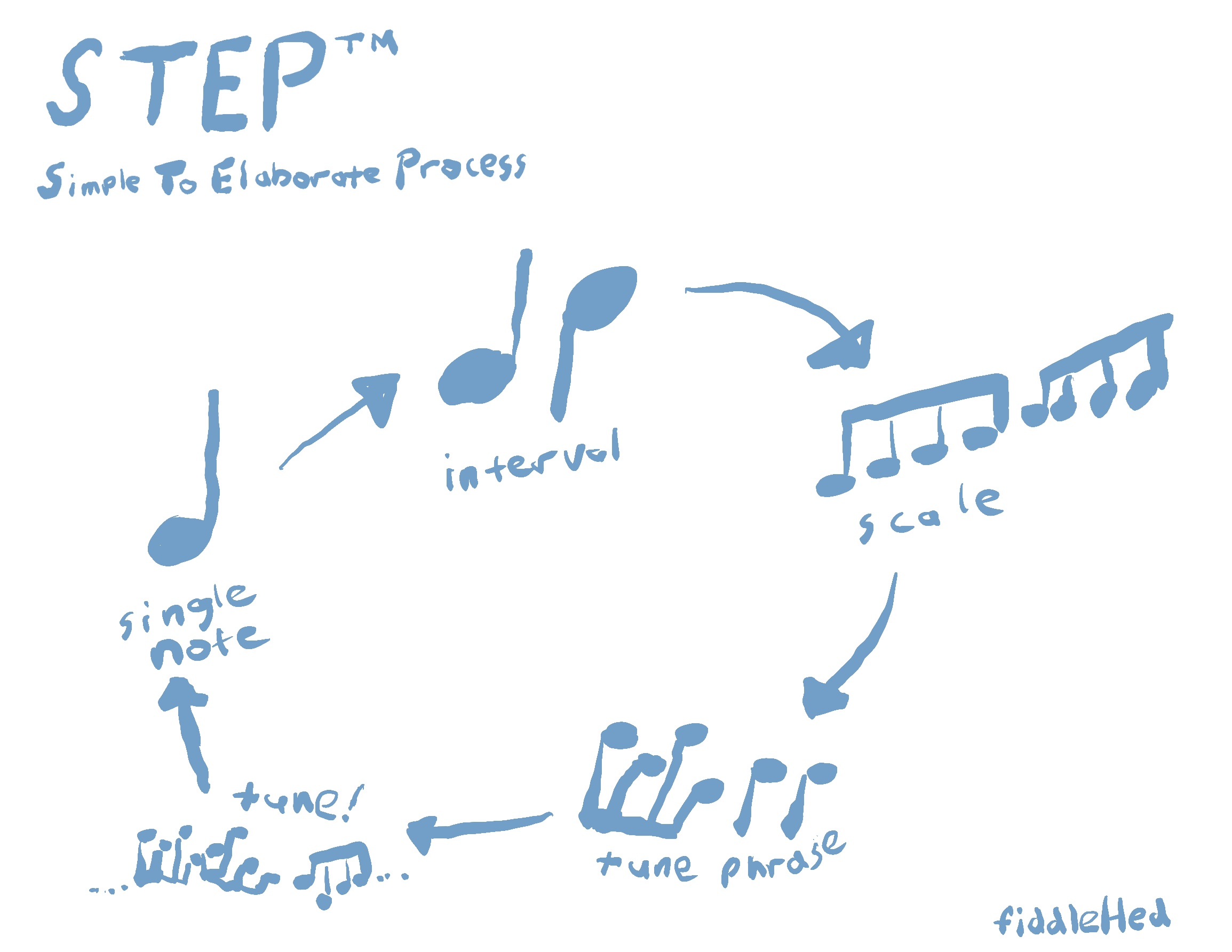
Starting with single notes is the essential thing to do if you want to play better in time and speed things up.
Think of this skill (playing faster) as learning a new instrument. If you decided to pick up the French horn, you wouldn’t start with a Brahm’s concerto. You’d start by playing single notes. In the same way, if you want to play faster, you start with single notes.
Then do more complex things: intervals, string-crossing, scales, phrases, tunes. You’ll notice a bigger challenge even when you go from one to tow notes. Certain intervals will be more challenging (like DH3-A1) than others (D0-1).
So even if you’re an absolute beginner, you can work on playing single notes faster.
This is a circular process. When you go past the edge of your abilities, then move towards simplicity.
Always try to work at your edge.
Do less
Use less energy. Play with less bow. Play with less effort. Learn to Play It Casual. Lighten the finger pressure (avoid the Death-grip! ☠️)
Not only will this help your timing and speed, you’ll play everything with more flow. You’ll feel better about your fiddling because it’ll sound nicer 🌤
Speed up the hard parts first
Where do you tend to stumble? Loop on those parts until they flow. Gradually speed them up. Once you can’t play it any faster (without breaking down), then stop and take note of your fastest tempo.
Rule: the hardest part sets the speed for the whole tune
Track your progress
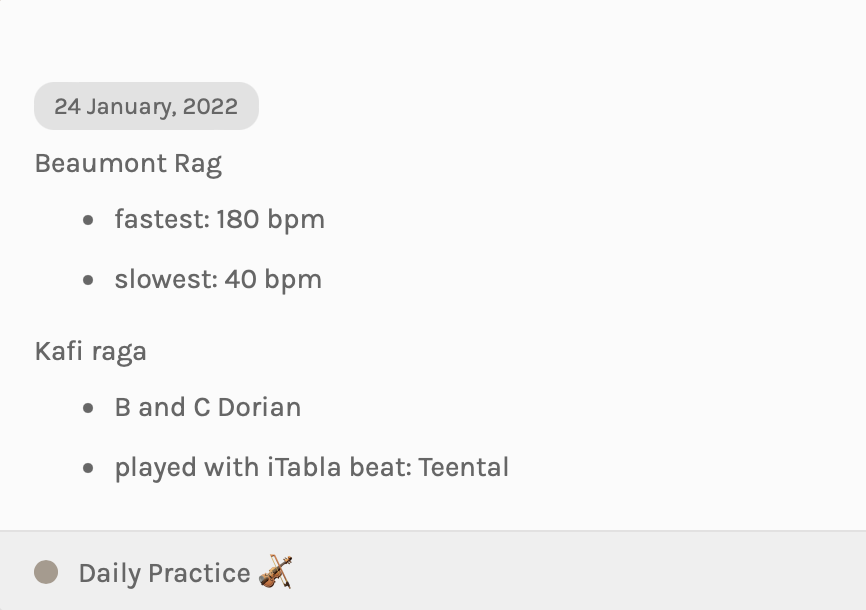
Each time you practice something, take note of your fastest tempo. Use a daily practice journal to track your fastest tempos on tunes and techniques.
Make it your goal to play it at least 3 bpm faster each day (which is almost impossible to perceive).
Each day, start at a comfortable, medium tempo, play it slow, then work up to your fastest tempo, then end on a medium tempo. Make A Tempo Sandwich 🥪
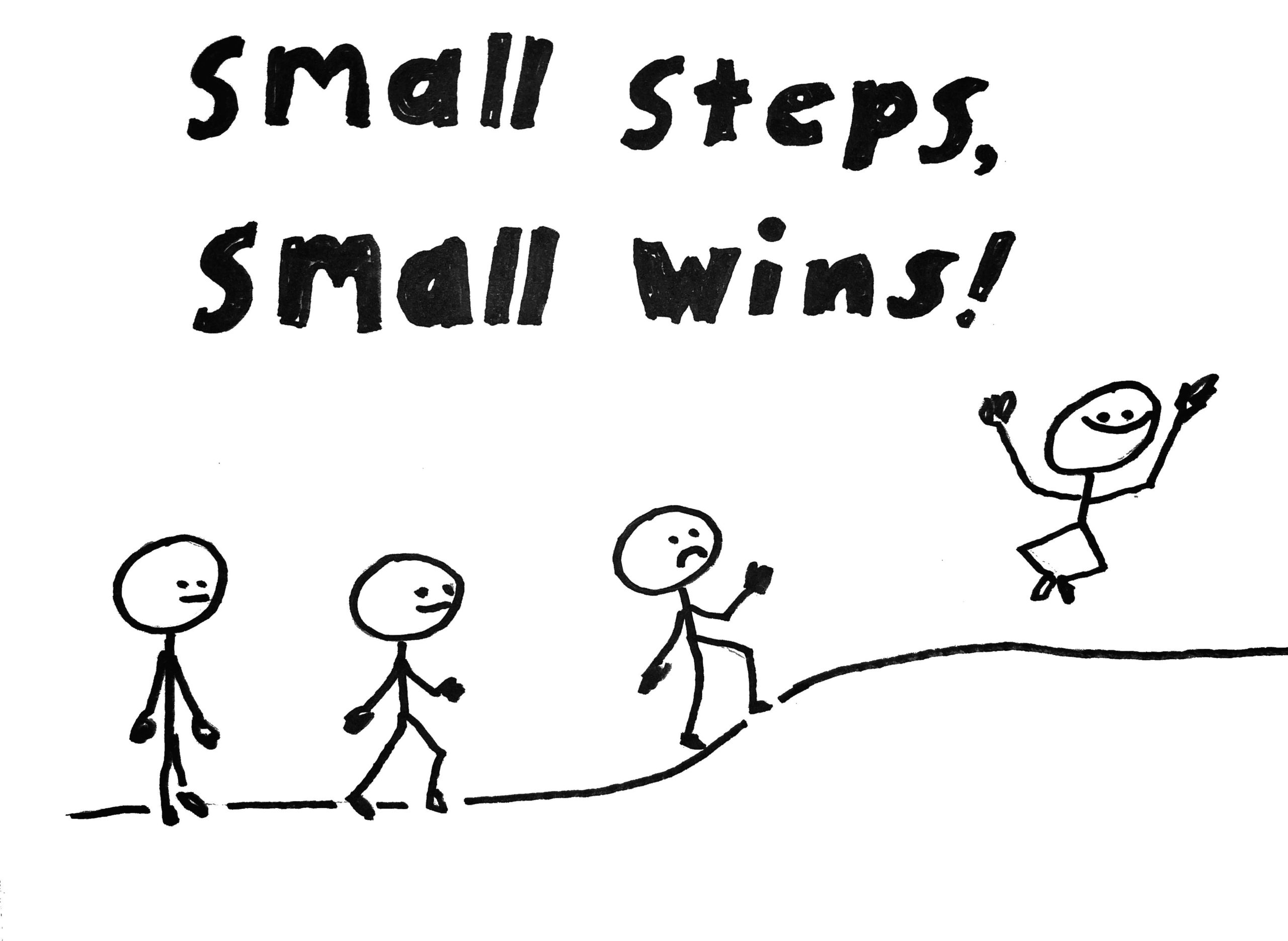
Tracking will help you to increase your speed over time. It might become a source of fun and gratification. Remember, small steps, small wins.
Slow down to play fast
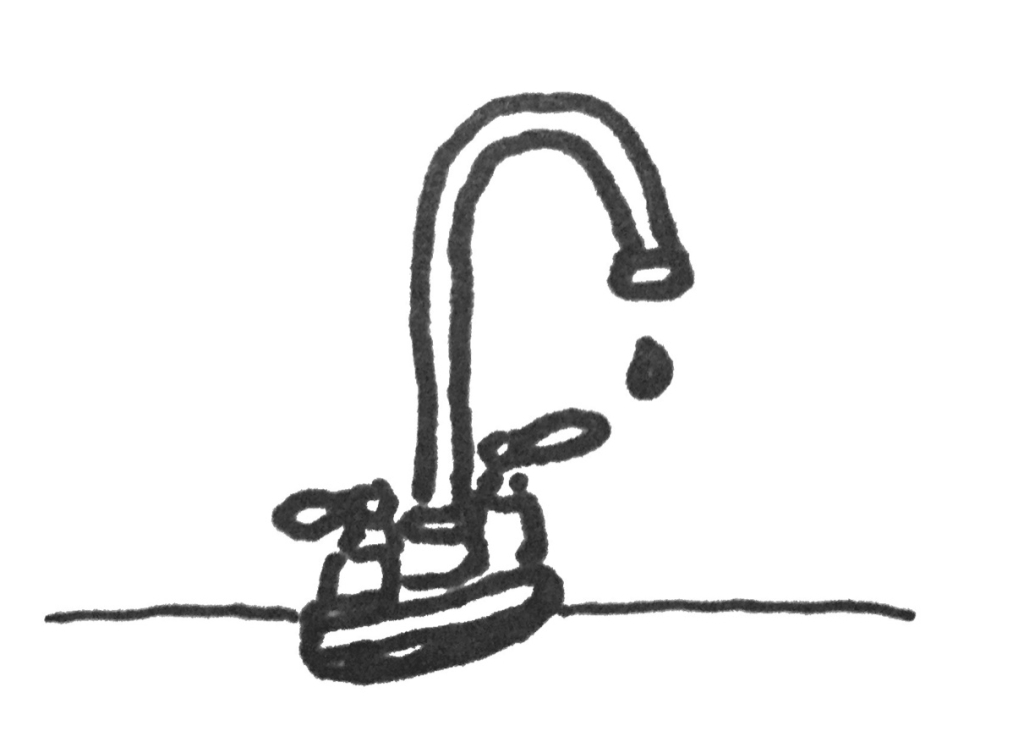
If you want to play something fast, first play it at a ridiculously slow tempo with a metronome. I like to think of this as the “Jedi-knight method of playing faster.” It’s counter-intuitive. Slow is not fast!
If you play it slow you’ll have a deeper command of that thing you’re trying to speed up.
Playing super-slow is mentally challenging but not physically challenging. The tune starts to sound different and weird as it slows down. So it’s mentally challenging
Playing slow helps the fingers and hands to map things out. It’s a way to be kind to your body and yourself.
Playing fast is physically challenging but more intuitive than super-slow tempos. You can hear it, but you just can’t move your fingers and arms that quickly.
Learn to enjoy the sound of fiddle tunes played more slowly. You’ll be more likely to do this, and it will lay the foundation for playing faster.
Accept your current limits
You’ll gradually be able to speed things up if you use the strategies in this lesson. However, at some point you’ll reach a limit. A speed at which you cannot yet play something.
Even the greatest violinist on earth has an upper speed limit.
Accepting these limits is a way of being kind to yourself. Also, you’re less likely to give up if you accept your current limits.
Let’s sum up
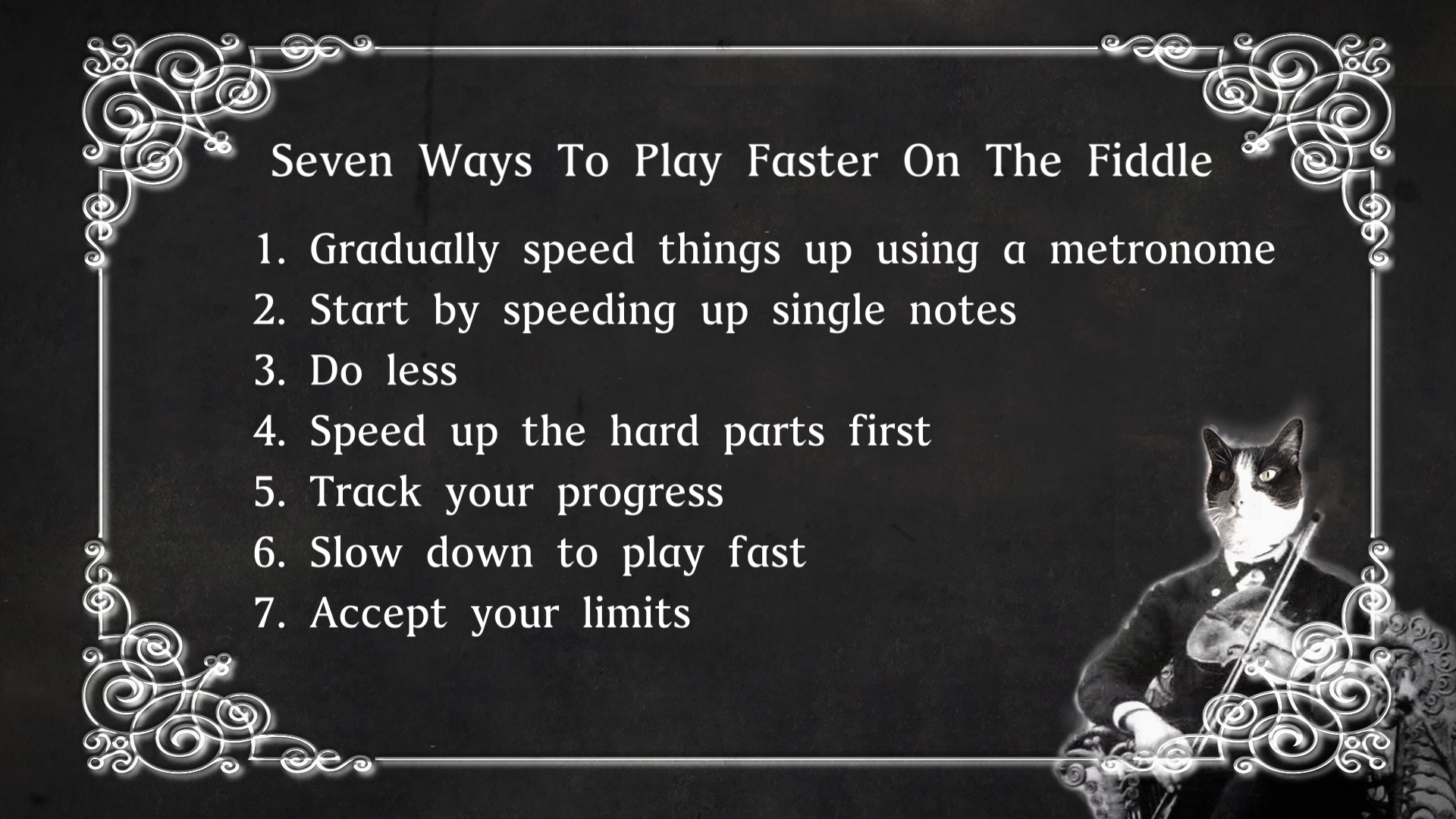
Further learning
I gave a workshop on how to play faster. You can take it any time with the replay: Playing Faster Workshop.
- How to Improve Your Timing With A Metronome
- Make A Tempo Sandwich 🥪
- Playing At A Steady Tempo Workshop
Are you ready to begin your fiddle journey? I’ll send you some free lessons tailored to your current skill level.
Click here to become a FiddleHed!
How To Play In Time Course >>



Great advice!